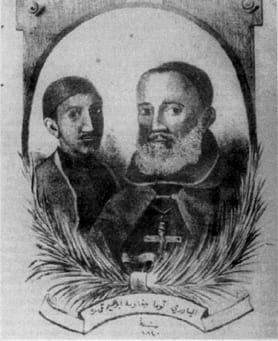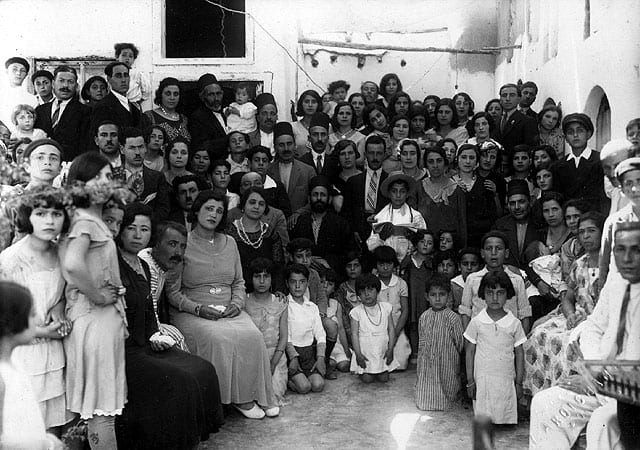A bizarre phenomenon took place in Europe during the months of Spring. People claimed during that time of year that a significant number of people had disappeared from the face of the earth. Rigorous investigations – based mainly on the work of advanced medieval Identification and Forensic Science divisions – determined that those missing persons fell prey to a dark Jewish ritual. That liters of gentile blood had been extracted from the victims’ bodies with which to bake matza. What else could it be.
Historians crossed swords over when and where the first blood libel in history occurred. In Norwich or Wuerzburg. That has less bearing on the matter at hand. What is important is that the blood libel phenomenon was born in Medieval Europe; grew in the Renaissance; and got old in Europe’s Modern Age. The reason was simple: The “Continent” was mainly populated with “descendants” of Jesus. Fostered and emboldened by the Church, they had an old score to settle with the Jews. The blood libel was an effective way to avenge their archenemies and demonize their brazen religion.
What was new – but in no way refreshing – was that, unlike other blood libels, the one we will address here did not emerge in Europe. It began here, 60 kilometers from Mt. Hermon, in Damascus.

The events unfolded in the 1830s, when Syria was controlled by Muhammad Ali, the charismatic Egyptian leader who expelled the Ottoman Empire from the region. Seeking the favor of his French allies, Ali granted broad privileges to the Christian minority, including freedom of worship and nominations to coveted, key positions. The Muslim population resented the Christian minority’s extended power and in time, developed growing animosity toward the Christians. As always, there was no better way to appease one enemy than to find another common enemy.
In perfect timing – or more precisely on February 5, 1840, 179 years ago this week – a Christian monk named Tomaso disappeared after he was seen hanging an announcement in the entrance to the synagogue in Damascus’s Jewish market. His disappearance was followed by that of his students and a Muslim boy, Ibrahim Amara. The Christian leadership seized this opportunity to spin the incident into incitement of the city’s Muslims against its Jews. They maintained that the Jews required gentile blood to perform a secret ritual inherent in baking Passover matza. The accusations were led by French Consul Ratti-Menton and bolstered by Prime Minister Adolphe Thiers, who deduced that “If Medieval Jews indeed perpetrated ritual murder, why wouldn’t the sinister Jews of Damascus do the same in our day?”

Things deteriorated wildly from there, as Jonathan Frankel recounts in his book “The Damascus Affair: ‘Ritual Murder,’ Politics, and the Jews in 1840.” A 20-year old Jewish barber, Salomon Halek, was detained for questioning when the announcement that the Christian monk was seen hanging on the synagogue door miraculously found its way to the wall opposite Halek’s barber shop. Halek, who could not bear the ensuing torture, named seven of the Jewish community’s dignitaries. Among them was the merchant David Harari and his three brothers, Isaac, Aaron and Joseph; their uncle, Joseph Laniado, and two rabbis, Moses Abulafia and Moses Saloniki. All, except Abulafia, were arrested and tortured to death. Abulafia was deprived of sleep for three days, intermittently dragged by a rope tied to his penis and whipped on the soles of his feet. When he could bear no more, he declared that he wished to convert to Islam. Abulafia turned state’s witness and his “confession” maintained that he delivered a bottle filled with Friar Tomaso’s blood to Damascus Chief Rabbi Jacob Anthabi. Rabbi Anthabi withstood brutal torture and did not break down. Abulafia also “translated” for the inspectors, sections of the Talmud allegedly confirming the blood rite’s role in documented Jewish tradition.
Four days before that, bones were found in a canal in the Jewish Quarter that were immediately declared those of Friar Tomaso. The bones were buried in a celebratory ceremony before an inflamed crowd. No one among the thousands in the crowd thought to ask how bones as small as those of a cat or dog could belong to a large man like Friar Tomaso.

Meir Farhi, of the well-connected Farhi family, was indicted in the disappearance of the Muslim servant, Ibrahim Amara, after Farhi’s servant ratted on him. Farhi, who hid in the home of a Muslim washer woman, was ultimately exposed by his wife. She surrendered when her little boy nearly bled to death before her eyes after receiving 300 lashes.
All of this was just a teaser for the obsessive lust for vengeance that eventually gripped the authorities. In the absence of blood with which to frame their victims, they detained 63 boys, aged 3-10, and tortured them to extract confessions from their parents.
Anglican missionary George Wildon Prietz, who arrived in Damascus on March 30, provided the following detailed report of those tortures: “First, flogging; secondly, soaking persons in large tanks of cold water in their clothes, thirdly, the head machine, by which the eyes are pressed out of their sockets; fourthly, tying up certain parts of the body, and ordering soldiers to twist them in such a manner that the poor sufferers grew almost mad from pain; fifthly, standing upright for three days without being allowed any other posture, nor even to lean against the wall, and when they would fall down being aroused up by the bystanding sentinels with their bayonets; sixthly, being dragged about in a large court by their ears till the blood gushed out; seventhly, having thorns driven between the nails and the flesh of their fingers and toes; eighthly, having fire set to their beards till their faces are singed; ninthly, having candles held under their noses so that the flame arises up into their nostrils.” Remember that the victims were little boys.

These atrocities finally ceased when world Jewry – and particularly the Rothschild Family and “Benevolent Minister” Moses Montefiore – intervened. They collaborated with Adolphe Cremieux – who would later become the Jewish Justice Minister of France – to expose the forged documents and rouse international public opinion. Muhammad Ali was finally convinced to free the Jewish prisoners and put an end to the affair.
The cloud had a silver lining. The Damascus Affair became a bridge of solidarity between Western and Eastern Jewry. Both were victim to a loathed form of anti-Semitism – “blood libel” – that possessed the world for centuries.